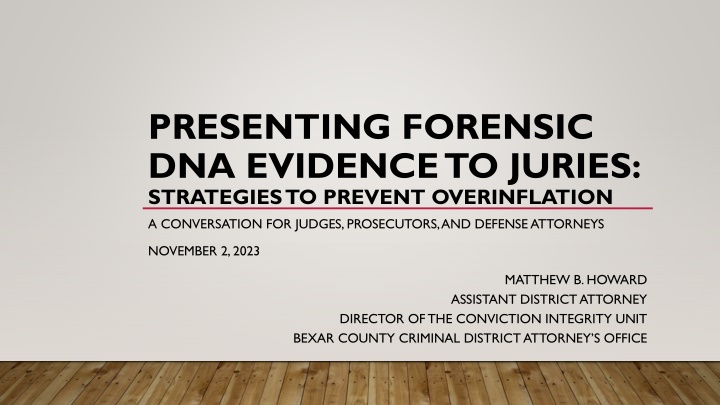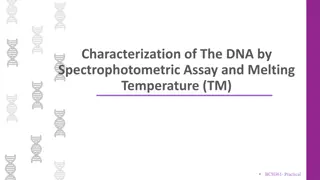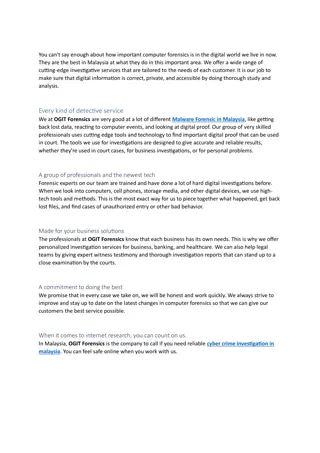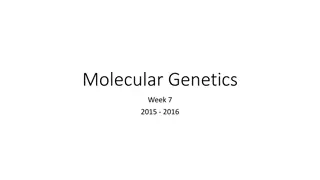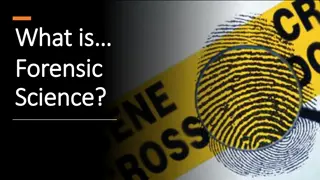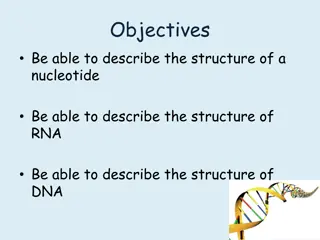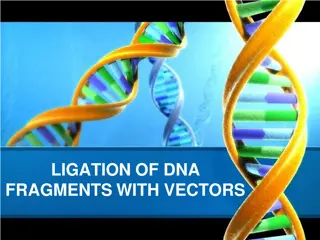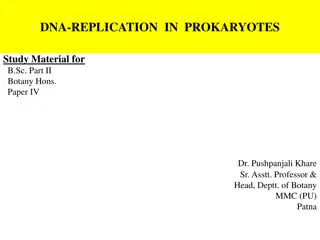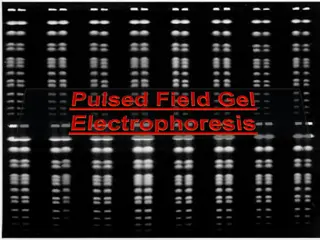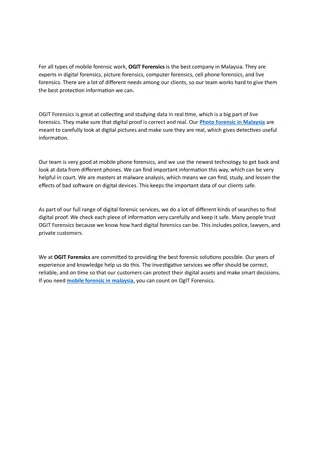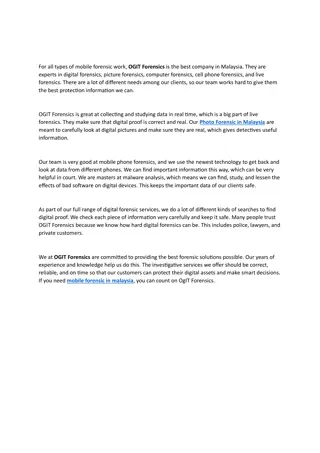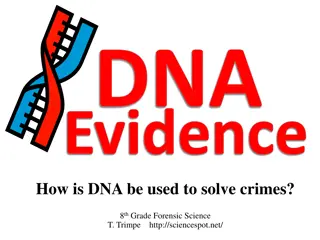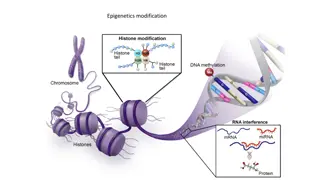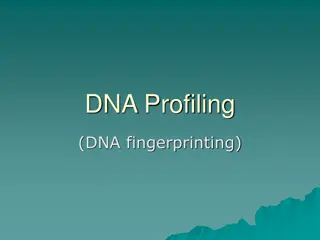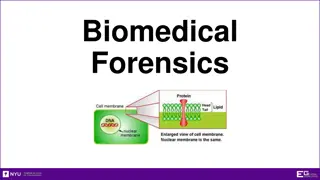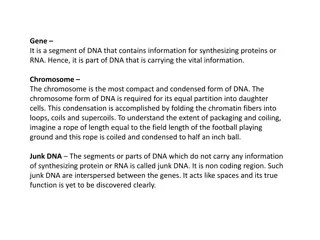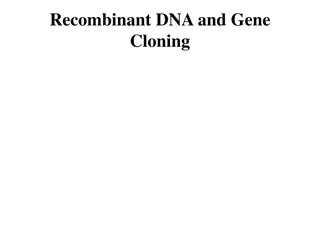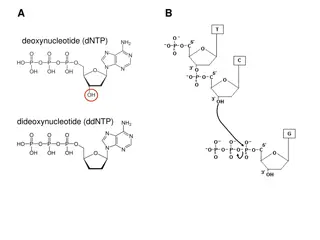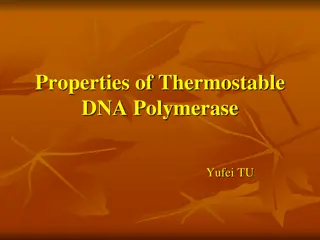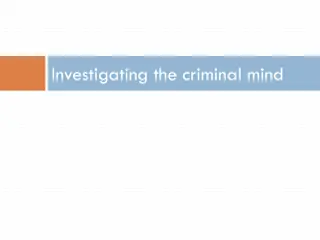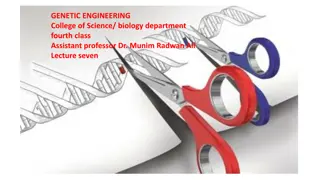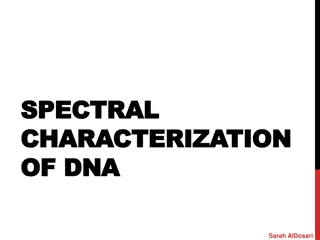Strategies for Presenting Forensic DNA Evidence Without Overinflating Importance
Presenting forensic DNA evidence to juries requires a balanced approach to prevent overinflation of importance. Early consultation with experts, adherence to Daubert Standard, addressing DNA contamination risks, and discussing statistical interpretation are crucial aspects to consider in ensuring a fair and objective presentation. By focusing on these strategies, judges, prosecutors, and defense attorneys can enhance the jury's perception of DNA evidence without bias or prejudice.
Download Presentation

Please find below an Image/Link to download the presentation.
The content on the website is provided AS IS for your information and personal use only. It may not be sold, licensed, or shared on other websites without obtaining consent from the author.If you encounter any issues during the download, it is possible that the publisher has removed the file from their server.
You are allowed to download the files provided on this website for personal or commercial use, subject to the condition that they are used lawfully. All files are the property of their respective owners.
The content on the website is provided AS IS for your information and personal use only. It may not be sold, licensed, or shared on other websites without obtaining consent from the author.
E N D
Presentation Transcript
PRESENTING FORENSIC DNA EVIDENCE TO JURIES: STRATEGIES TO PREVENT OVERINFLATION A CONVERSATION FOR JUDGES, PROSECUTORS, AND DEFENSE ATTORNEYS NOVEMBER 2, 2023 MATTHEW B. HOWARD ASSISTANT DISTRICT ATTORNEY DIRECTOR OF THE CONVICTION INTEGRITY UNIT BEXAR COUNTY CRIMINAL DISTRICT ATTORNEY S OFFICE
IMPORTANCE OF AVOIDING OVERINFLATION Presenting DNA evidence carries a risk of overinflating its importance in the eyes of the jury. Overinflation can lead to undue weight being placed on the DNA evidence, potentially overshadowing other crucial aspects of the case. Attorneys should strive for a balanced and objective presentation of DNA evidence to avoid prejudicing the jury's perception.
PRE-TRIAL CONSIDERATIONS Early consultation with DNA experts is essential to understand the evidence and its limitations. Relevant education, training, and experience in DNA analysis Qualifications, Expertise, and Limitations The defense should have access to the prosecution's DNA expert reports and access to independent experts if necessary. The prosecution must disclose all relevant DNA evidence and any potential issues or challenges.
THE DAUBERT STANDARD Be prepared to discuss the method and validation of the method Be open and honest about error rates, issues, and blind-spots Peer Review and Publication
DNA CONTAMINATION Ask the hard questions: Was there a risk of contamination during: Evidence collection? Evidence handling? Evidence analysis? What protocols are in place to prevent contamination? Highlight quality controls, laboratory procedures, and chain of custody documentation
STRIKING A BALANCE: DISCUSSING STATISTICAL INTERPRETATION Clear communication of statistical results is key consider balance between simplifying the findings and over simplifying the findings. Be familiar with Statistical Methods (Random Match Probability vs. Likelihood Ratio) and the distinction between the two. Have a conversation with your expert, in front of the jury, about challenges and realistic terms try to avoid overwhelming the jury with technical jargon and focus on the key findings.
STRIKING A BALANCE: DISCUSSING STATISTICAL INTERPRETATION Example: Q: Can you explain the challenges involved with interpreting DNA mixtures, where DNA from multiple contributors is present? vs. Q: Can you walk us through what you mean when you say, DNA mixture ?
STRATEGIES TO PREVENT OVERINFLATION: DIRECT EXAMINATION Prepare the expert to explain their analysis, methodology, and results in a clear and accessible manner Contextualize DNA Evidence, but don t misuse your expert
STRATEGIES TO PREVENT OVERINFLATION: DIRECT EXAMINATION Do: Explain the science behind DNA analysis and its limitations. Clearly communicate the probabilistic nature of DNA evidence and the potential for errors or contamination. Don t: Use direct to make your argument about the overview of the case, or to push the facts (You can highlight the significance of DNA evidence within the broader context later paint that picture in argument!)
STRATEGIES TO PREVENT OVERINFLATION: CROSS EXAMINATION CONSIDERATIONS Know enough to be dangerous Question the Methodology Highlight Potential Contamination or Sample Mix-up Address Error Rates and Statistical Interpretation Issues
STRATEGIES TO PREVENT OVERINFLATION: CROSS EXAMINATION CONSIDERATIONS Know enough to be dangerous Review the DNA Report and look for remarks, issues with the evidence Consult with Your Own DNA Expert and ask about potential issues with these methods
STRATEGIES TO PREVENT OVERINFLATION: ARGUMENT TO THE JURY This is the time to highlight the significance of DNA evidence within the broader context paint the big picture Use clear and accurate closing argument regarding DNA evidence avoid basically or essentially or might as well have said s Own the meaning and limitations for the jury or risk that opposing counsel will do it for you
SALES, NOT WARRANTIES Really boils down to be ethical, don t be unethical
THANK YOU! Matthew B. Howard Matthew.Howard@bexar.org (210) 335-2418
